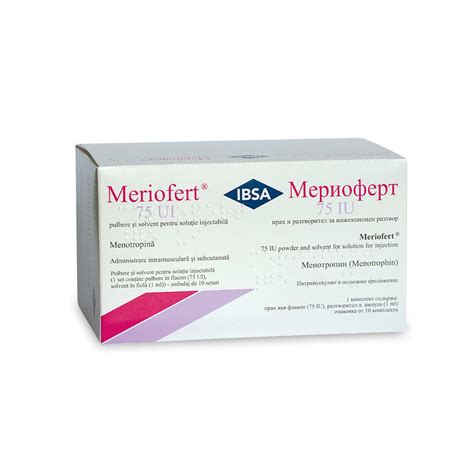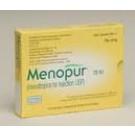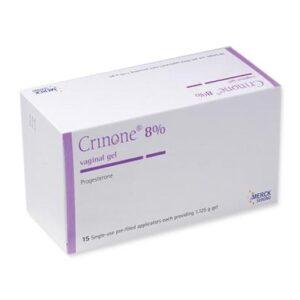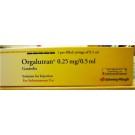Do not use Meriofert if you have any of the following:
- Enlarged ovaries or cysts not caused by a hormonal disorder (polycystic ovarian disease).
- Bleeding of unknown cause.
- Cancer of the ovaries, uterus or breast.
- Abnormal swelling (tumour) of the pituitary gland or hypothalamus (brain).
- Hypersensitivity (allergy) to menotrophin or any of the ingredients in Meriofert
This medicine should not be used if you have an early menopause, a malformation of the sexual organs or certain tumours of the womb that would make a normal pregnancy impossible.
Warnings and Precautions
Although no allergic reactions to Meriofert have yet been reported, you should tell your doctor if you have an allergic reaction to similar medicines.
This treatment increases your risk of developing a condition known as ovarian hyperstimulation syndrome (OHSS) (see Possible side effects). If ovarian hyperstimulation occurs then your treatment will be stopped and pregnancy will be avoided. The first signs of ovarian hyperstimulation are pain in the lower abdominal region as well as nausea (feeling sick), vomiting and weight gain. If these symptoms occur you should be examined by your doctor as soon as possible. In serious, but rare cases, the ovaries can become enlarged and fluid can build up in the abdomen or chest.
The drug used to bring about the final release of mature eggs (containing human chorionic gonadotrophin-hCG) can increase the likelihood of OHSS. It is therefore not advisable to use hCG in cases where OHSS is developing and you should not have sexual intercourse even if using a barrier method of contraception for at least 4 days.
It should be noted that women with fertility problems have a higher rate of miscarriages than the normal population.
In patients having treatment to help ovulation, the occurrence of multiple pregnancies and births is increased compared to natural conception. However, this risk can be minimised by using the recommended dose.
There is a slightly increased risk of extra-uterine pregnancy (an ectopic pregnancy) in women with damaged fallopian tubes.
Multiple pregnancies and characteristics of the parents undergoing fertility treatments (e.g. maternal age, sperm characteristics) may be associated with an increased risk of birth defects.
Treatment with Meriofert, just as pregnancy itself, may increase the chance of having thrombosis. Thrombosis is the formation of a blood clot in a blood vessel, most often in the veins of the legs or the lungs. Please discuss this with your doctor, before starting treatment, especially:
- If you already know you have an increased chance of having thrombosis.
- If you, or anyone in your immediate family, have ever had a thrombosis.
- If you are severely overweight.
Children
The medicine is not intended for use in children.
Other medicines and Meriofert
Tell your doctor or pharmacist if you are taking or have recently taken or might take any other medicines.
Pregnancy, breast-feeding and fertility
Meriofert should not be used if you are pregnant or breast-feeding.
Driving and using machines
Meriofert has no or negligible influence on the ability to drive and use of machinery.
Meriofert contains sodium
This medicine contains less than 1 mmol of sodium (23 mg) per reconstituted solution, that it is to say essentially “sodium free”.





